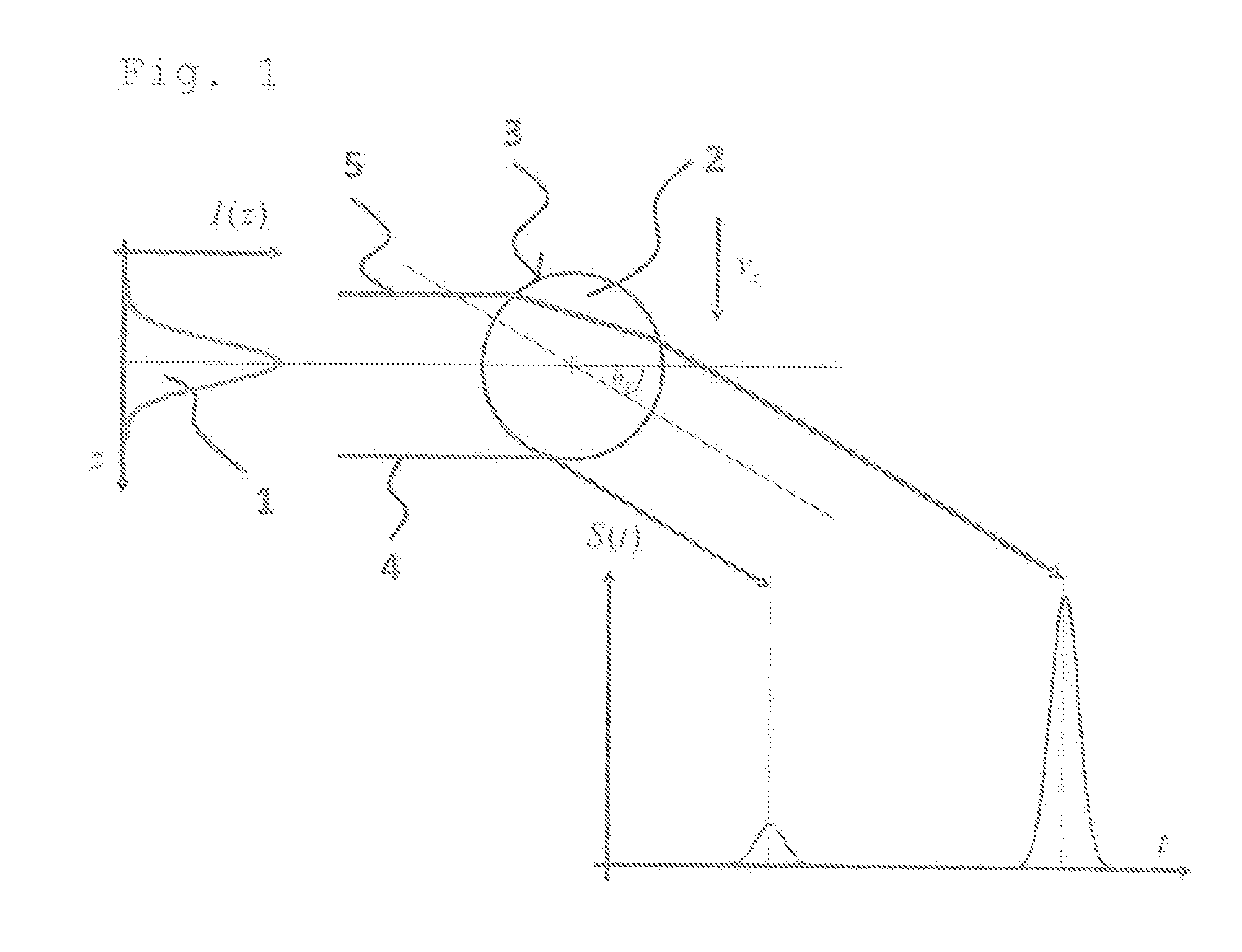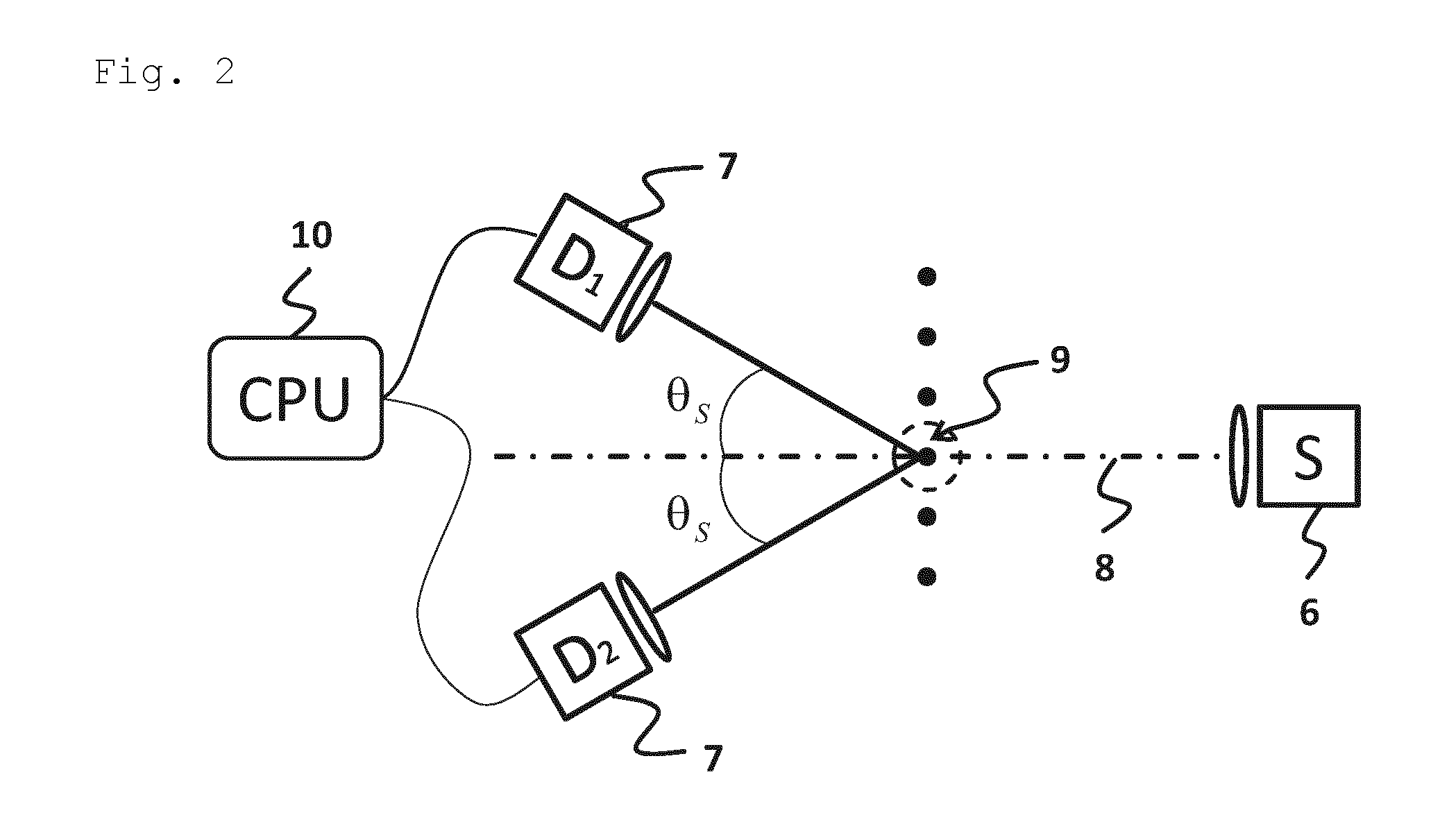Method and device for determining the size of a transparent particle
a technology of transparent particles and measurement methods, applied in measurement devices, particle and sedimentation analysis, instruments, etc., can solve the problems of inability to economically reasonable use of measurement methods, inconvenient measurement methods, and inaccurate geometric assumptions for the determination of size, etc., to achieve rapid and reliable particle size determination
- Summary
- Abstract
- Description
- Claims
- Application Information
AI Technical Summary
Benefits of technology
Problems solved by technology
Method used
Image
Examples
Embodiment Construction
[0046]FIG. 1 shows schematically the relevant beams for determining the particle size for the method according to the invention in a scattering process in a scattering angle θs. Of a light source (not shown in FIG. 1), a beam of light 1 strikes a particle 2 which is moving through the beam of light 1 crossing through the beam of light 1. The beam of light 1 is reflected from the outside on the interface 3 of a particle 2 to the surrounding medium and transmitted through the particle 2 on emerging from the particle 2 through refraction on entrance and exit from the particle 2. FIG. 1 shows the solid-line beams for the reflection and for the transmission that occur at a predetermined scattering angle θs and can be detected. A reflection beam 4 is reflected at the interface 3. A transmission beam 5 is refracted into the interior of the particle 2 and is refracted again on emerging from the particle 2.
[0047]The respective angle of incidence θi of the solid-line beams which generate corr...
PUM
| Property | Measurement | Unit |
|---|---|---|
| size | aaaaa | aaaaa |
| scattering angle | aaaaa | aaaaa |
| refractive index | aaaaa | aaaaa |
Abstract
Description
Claims
Application Information
 Login to View More
Login to View More - R&D
- Intellectual Property
- Life Sciences
- Materials
- Tech Scout
- Unparalleled Data Quality
- Higher Quality Content
- 60% Fewer Hallucinations
Browse by: Latest US Patents, China's latest patents, Technical Efficacy Thesaurus, Application Domain, Technology Topic, Popular Technical Reports.
© 2025 PatSnap. All rights reserved.Legal|Privacy policy|Modern Slavery Act Transparency Statement|Sitemap|About US| Contact US: help@patsnap.com



